The Panzerkampfwagen II Ausf. L "Luchs" (German for lynx) was a WW2 German light tank developed between 1940 and 1942 by Daimler-Benz and MAN. It shared little with previous versions of the Panzer II (1936) having a thicker, large hull, a Schachtellaufwerk drivetrain, beter engine for higher performances, "slack track" configuration and better radios. It was to be the next organic reconnaissance tank the Werhpacht lacked, but the grand plans of having 600+ delivered by 1944 petered out as only 100 were built from September 1943 to January 1944 (plus four Ausf. M conversions). They served on the Eastern front where most were lost during the offensive on Kursk salient (Operation Citadel) while the survivors and later batches were seen in Normany in the summer of 1944, where two were captured, now in Bovington and Saumur.
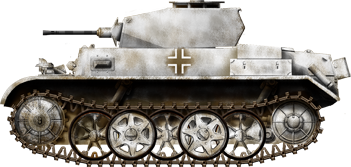
The short-lived VK.9.01, standardized as the Panzer II Ausg G (45 built), a first attempt.
The new vehicle ws a bit larger, but far heavier, with a new hull and a new chassis featuring the overlapping wheel arrangement, with five links on both sides and a large thread for better gruip in mud and snow, a lesson of the eastern front. The powerpack was also brand new, a 150 hp Maybach HL 45 engine, which combined with its 10.5-ton, enabled a respectable top speed of 50 km/h. In 1939 despite other priorities, the prototype was complete and made a serie of field trials. They were mostly positive, and the new model was adopted as the Panzerkampfwagen II Ausf. G. A production order came out, which went from From April 1941 to February 1942 before it was halted on the 12th vehicle. Indeed there were issues with the new tank, which was seen as too slow and heavy, production resuming later in 1942-43.
On April 15, 1939, Daimler-Benz and MAN were ordered to design another 13-ton reconnaissance tank, this time designated VK 13.01, as an evolution of the VK 9.01. Its turret was brand new and could now fit two, a gunner and commander. By July 1940, the Waffenamt however contacted Škoda and Böhmisch-Mährische Maschinenfabrik (BMM) for their own 13-ton variant of the same, and by July 1941, MAN manufactured its chassis.
By the end of January 1942, the first of several VK 13.01 prototypes were tested at Kummersdorf. Škoda's T-15 light tank was also tested. It was based on LT vz.35 with BMM, which presented a modified Panzer 38(t) variant. The BMM project won. However on the first round of comparative trials, and from the second phase in May-June 1942, MAN won in turn. This time, the prototype was judged the better all around and chosen for production by the Wehrmacht, standardized as the Panzerkampfwagen II Ausf. L.
However if it was called VK 13.03 for the Waffenamt, or even Panzerspähwagen II in the Wehrmacht, the L variant letter was used for a surname, "Luchs", which became propular and gained support by Hitler, which for propaganda purposes wanted evocative names for its brand new tank tree. Production started, but it was soon plagued by several delays (see later).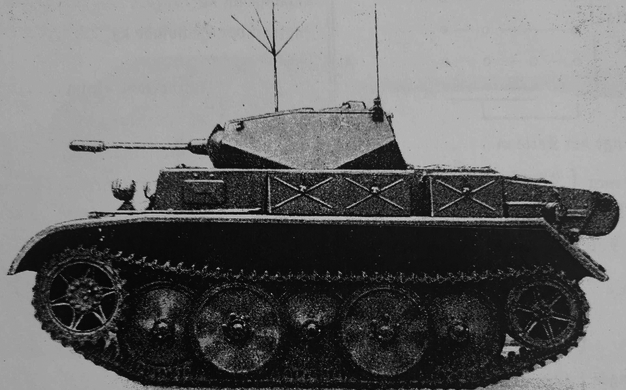
MAN factory photo of the completed model
The Luchs was larger than the Panzer II Ausf.G: Its overall weight was 11.8 tons light (13t fully loaded) and it measured 4.63 m (15 ft 2 in) long overall, for a width of 2.48 m (8 ft 2 in) and 2.21 m (7 ft 3 in) in height. had a six speed transmission and reverse with its new, 180 hp Maybach HL 66P engine (compared to the Panzer II's 130 hp engine for 40 km/h) allowing it to reach 60 km/h (37 mph), and still with a respectable range of 260 km (160 mi). Also the turret was fitted with two radios, the short range FuG 12 and long range FuG Spr. The turret was perhaps the least innovative feature, having the same 20 mm, but of an improved model, together with 330 rounds and a single coaxial MG.34 with 2,250 rounds in reserve.
The hull was bulkier compared to the former Aufs of the Panzer II, with a three-tiered sloped nose and 90° vertical glacis in which were fitted three overvation slit posts, including a fake one in the middle to draw fire. They were used by the driver and radio operator. There were also armoured shutters with slits on the sides as well. The rectangular hull ended abruply aft with an inverted sloped back plate. It was dotted with engine and transmission access hatches and cooling grilles for the radiators over the Maybach unit. The latter was rather large, and still packed inside the relatively small compartment. The hull also had geberous mudguards-catwalks on either side, due to the larger tracks, with a single universal blackout lamp present on the left fender only. Further aft on either side of the central hull section, were installed two storage bins on either sides, with tooling, cables, and the crew's additional gear. They also acted as extra side armour.
Turret: Front 30mm/10°; side 20mm/21°; rear 20mm/21°; Top 12mm/79°; Gun Mantlet 30mm, rounded shape.
Hull, front upper plate 30mm/10°, lower 30mm/22°, side upper 20mm, lower same. Rear Upper/lower Hull 20mm/28°
Upper and lower Hull Top and Bottom 10mm/86° and 10mm/90°.
In some tank divisions however late in the war, the frontal armor often received welded-on additional 20-mm armor plates, notably for those of the 4th reconnaissance battalion, 4th Panzer Division.
The transmission comprised a two-disc main dry friction clutch from Fichtel & Sachs as well as a mechanical synchronized transmission, Aphon SSG48 (6-1), plus a gimbal shaft as well as MAN-type pad brakes. This power was passed onto the ground through a drivetrain made of five cropped support links and the interleaved (Schachtellaufwerk) system composed of two rows of 735 mm diameter cast roawheels and the "slack track" configuration. They were all suspended by torsion bars, also a proven system. The Interleaved systems had however its detractors: In great cold, if mud was clogging the drivetrain, it could freeze solid and completely block the tank until the roadhweels were dismounted and frozen mud dealt with.
Based on its total capacity of 235 L the Luchs's operational range was in standard 260 km on road, for a top speed of 60 km/h down to 42km/h cross-country. In the latter case, range could be reduced from 175 down to 125 km or up to 290 km depending on the regime used and terrain.
Nothing special about the MG.34 which as a stock "classic", with round belts and interlocked tracers.
Although rather assimilated to protection than offense, the Luch also displayed smoke grenades, three on either turret corner forward, of the Nebelwurfgerät 39 type. These 90 mm electrically-fired smoke generators were an effcient active concealment system, which started to become mainstream on 1943-45 tanks of many models.
The Luchs was planned to enter armoured reconnaissance detachments called "Panzer-Aufklarung-Abteilung" organic to panzerdivisions. These were composed each of four platoons, each comprising seven Luchs plus one used as company HQ vehicle, with a better radio. Each platoon was assisted by four Sd.Kfz. 250/1 light half-tracks with supplies, and one Sd.Kfz.9 heavy half-track for salvage of ditched or damaged vehickes, as well as seven Sd.Kfz.2 Kettenkrad half-track motorcycles as a further screen. Of course this was all on paper, and given that only 100 were made, there was just enough to fill at best three Panzer-Aufklarung-Abteilungs (32 Luchs each), thus integrated three Panzerdivisions on the whole eastern front.
The vehicle entered service by in the autumn of 1942, filling the 2nd Company of the 4th Reconnaissance Battalion attached to the 4th Panzer Division. By September 1943, after crippling losses at Kursk, it was disbanded, the remaining tanks sent to Germany for repairs. With Operation Citadel being their first engagement, the one and only Battalions cumulated by August 17, 1943, only 5 Luchs in operational state, for the 2nd tank company only and by September there were still 10 remained in the company.
Only a fraction returned after repairs, and the company was re-created as the 1st Company, 9th Reconnaissance Battalion attached to the 9th Panzer Division ready for combat in March 1944 and down to just 25 Luchs, as the platoons were downgraded to six tanks plus one HQ tank. But instead of the Eastern Front they were sent as reinforcements in France by June 1944. After Falaise pocket disaster, the remaining vehicles were send to specified units for additional recruitment or ventilated as stopgap for other tanks in a piecemeal fashion.
The Luchs overall served with the 116th Panzer Division, Western Front and the 3rd, 4th and 6th Panzer Division, Eastern Front. At some point later in the war, the 3rd SS Panzer Division Totenkopf and 5th SS Panzer Division Wiking on the Eastern Front also had Luchs. They received ofter an additionl frontal armor plate, additional radio equipment and antennas to act as platoon HQ, or long range communication vehicles.
Luchs with open-top turret and 50mm KwK 39 L/60 gun were probably made and pushed to the front in small quantities in 1944 but derivatuves such as the Bergepanzer Luchs and the Flakpanzer Luchs (lengthened VK 1305 chassis and 20mm Flakvierling or 37mm Flak 36) stayed at paper stage.
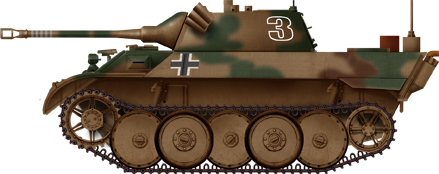
A further development of the Luchs, never produced: The VK 1602 Leopard.
Bergepanzer Luchs Armored recovery vehicle, Never produced.
Flakpanzer Luchs (VK 13.05) anti-aircraft tank with lengthened chassis, Flakvierling/37mm Flak 36
As of today, only two remained: One in France's Musée des Blindés in Saumur, chassis number 200164 and one in the United Kingdom at Bovington Tank Museum, chassis number 200117.
rzm.com/
militaryfactory.com/
panzerfabrik.net
tank-photographs.s3
achtungpanzer.com/panzerkampfwagen-ii.
ww2armor.jexiste
en.wikipedia.org
Development: VK 13.03
In the summer of 1938, Daimler-Benz and MAN began teamed up to developing a new reconnaissance tank, following a request to replace the agging Panzer II used in that role, and resist better than wheeled vehicles on adverse conditions on the eastern front. The prototype they came about took the VK 9.01 waffenamt index. For simplification it was attached to the Panzer II development line, but share little apart the turret. It was a brand new machine really tailored for the job at hand.
The short-lived VK.9.01, standardized as the Panzer II Ausg G (45 built), a first attempt.
The new vehicle ws a bit larger, but far heavier, with a new hull and a new chassis featuring the overlapping wheel arrangement, with five links on both sides and a large thread for better gruip in mud and snow, a lesson of the eastern front. The powerpack was also brand new, a 150 hp Maybach HL 45 engine, which combined with its 10.5-ton, enabled a respectable top speed of 50 km/h. In 1939 despite other priorities, the prototype was complete and made a serie of field trials. They were mostly positive, and the new model was adopted as the Panzerkampfwagen II Ausf. G. A production order came out, which went from From April 1941 to February 1942 before it was halted on the 12th vehicle. Indeed there were issues with the new tank, which was seen as too slow and heavy, production resuming later in 1942-43.
On April 15, 1939, Daimler-Benz and MAN were ordered to design another 13-ton reconnaissance tank, this time designated VK 13.01, as an evolution of the VK 9.01. Its turret was brand new and could now fit two, a gunner and commander. By July 1940, the Waffenamt however contacted Škoda and Böhmisch-Mährische Maschinenfabrik (BMM) for their own 13-ton variant of the same, and by July 1941, MAN manufactured its chassis.
By the end of January 1942, the first of several VK 13.01 prototypes were tested at Kummersdorf. Škoda's T-15 light tank was also tested. It was based on LT vz.35 with BMM, which presented a modified Panzer 38(t) variant. The BMM project won. However on the first round of comparative trials, and from the second phase in May-June 1942, MAN won in turn. This time, the prototype was judged the better all around and chosen for production by the Wehrmacht, standardized as the Panzerkampfwagen II Ausf. L.
However if it was called VK 13.03 for the Waffenamt, or even Panzerspähwagen II in the Wehrmacht, the L variant letter was used for a surname, "Luchs", which became propular and gained support by Hitler, which for propaganda purposes wanted evocative names for its brand new tank tree. Production started, but it was soon plagued by several delays (see later).
Design

MAN factory photo of the completed model
The Luchs was larger than the Panzer II Ausf.G: Its overall weight was 11.8 tons light (13t fully loaded) and it measured 4.63 m (15 ft 2 in) long overall, for a width of 2.48 m (8 ft 2 in) and 2.21 m (7 ft 3 in) in height. had a six speed transmission and reverse with its new, 180 hp Maybach HL 66P engine (compared to the Panzer II's 130 hp engine for 40 km/h) allowing it to reach 60 km/h (37 mph), and still with a respectable range of 260 km (160 mi). Also the turret was fitted with two radios, the short range FuG 12 and long range FuG Spr. The turret was perhaps the least innovative feature, having the same 20 mm, but of an improved model, together with 330 rounds and a single coaxial MG.34 with 2,250 rounds in reserve.
Hull and turret
The box-shaped welded hull was divided into three compartments (control, combat and engine). The hull hosted mechanic-driver and seated alongside, the radio operator. Both the commander and gunner were located in the turret. Communication equipment comprised the FuG12 MW receiver with its rear antenna, and a 80-watt transmitter. The crew all had intercom to communicate. The turret model was close to the original Panzer II turret, yet roomier with rethinked ergonomics to allow both the commander and gunner to stay inside. The commander was normally seated rear above the driver to the right of the gun compared to the gunner seated to the left, with its hatch above. The latter hinged to the rear, and had a turntable episcope for a 360° view. The driver also had its own small hatch further forward, with also an episcope. There were attachment point on the turret for six fuel jerrycans.The hull was bulkier compared to the former Aufs of the Panzer II, with a three-tiered sloped nose and 90° vertical glacis in which were fitted three overvation slit posts, including a fake one in the middle to draw fire. They were used by the driver and radio operator. There were also armoured shutters with slits on the sides as well. The rectangular hull ended abruply aft with an inverted sloped back plate. It was dotted with engine and transmission access hatches and cooling grilles for the radiators over the Maybach unit. The latter was rather large, and still packed inside the relatively small compartment. The hull also had geberous mudguards-catwalks on either side, due to the larger tracks, with a single universal blackout lamp present on the left fender only. Further aft on either side of the central hull section, were installed two storage bins on either sides, with tooling, cables, and the crew's additional gear. They also acted as extra side armour.
Armor layout
The Luchs was far better protected than previous Panzer II variants but the Ausg G. The nose was protected by 30 mm on a three-piece beak, sloped between 10 and 25° for extra artificial thickness, whereas the hull sides were 20 mm thick as the back plate. The turret top was protected by 20 mm or armour, the engine deck by 13 mm, and the bottom just 10 mm, not sufficient to stop a mine blast.Turret: Front 30mm/10°; side 20mm/21°; rear 20mm/21°; Top 12mm/79°; Gun Mantlet 30mm, rounded shape.
Hull, front upper plate 30mm/10°, lower 30mm/22°, side upper 20mm, lower same. Rear Upper/lower Hull 20mm/28°
Upper and lower Hull Top and Bottom 10mm/86° and 10mm/90°.
In some tank divisions however late in the war, the frontal armor often received welded-on additional 20-mm armor plates, notably for those of the 4th reconnaissance battalion, 4th Panzer Division.
Engine and Performances
The Luchs had a generous Maybach HL 66P 6-cylinder, 4-stroke in-line engine, which ran on gasoline and was liquid cooled, for a total output of 180 hp. It starter was the Bosch GTLN 600/12-12000 A-4 with a manual backup. It ran on a "supercharged" fuel, ethylated petrol with 76 octane, located in two tanks for a total capacity of 235 liters. The carburetor was the trusted Solex 40 JFF II. However to see the possibility of adapting a Czech diesel, one prototype was tested with a V12 Tatra 103 rated for a more generous 220 hp. It was not adopted for production however.The transmission comprised a two-disc main dry friction clutch from Fichtel & Sachs as well as a mechanical synchronized transmission, Aphon SSG48 (6-1), plus a gimbal shaft as well as MAN-type pad brakes. This power was passed onto the ground through a drivetrain made of five cropped support links and the interleaved (Schachtellaufwerk) system composed of two rows of 735 mm diameter cast roawheels and the "slack track" configuration. They were all suspended by torsion bars, also a proven system. The Interleaved systems had however its detractors: In great cold, if mud was clogging the drivetrain, it could freeze solid and completely block the tank until the roadhweels were dismounted and frozen mud dealt with.
Based on its total capacity of 235 L the Luchs's operational range was in standard 260 km on road, for a top speed of 60 km/h down to 42km/h cross-country. In the latter case, range could be reduced from 175 down to 125 km or up to 290 km depending on the regime used and terrain.
Armament
The armament was conservative compared to all other Panzer II variants: The centerpiece was a new generation 2 cm KwK 38 L/55 autocannon, completed by a 7.92mm MG 34 coaxial machine gun. Rounds reserves were 320 and 2,250 rounds respectively. The 2 cm KwK 38 L/55 was associated with the Zeiss TZF6 optical sight. It went with about 15 different rounds types. The most efficient was the panzergranatpatrone 40 L'spur, either APIHC-T, APICR-T or HVAPI-T weighting 100g in a Light metal shell. Muzzle velocity with it was 1050 m/s The first had a special steel core, the second a tungsten carbide core and the last was a tracer round. Added to the Penetration (50 mm) there was an incendiary effect due the metal tip melting on impact. The Panzergranate 40 could defeat 40mm or 20mm at 100 and 500m respectively.Nothing special about the MG.34 which as a stock "classic", with round belts and interlocked tracers.
Although rather assimilated to protection than offense, the Luch also displayed smoke grenades, three on either turret corner forward, of the Nebelwurfgerät 39 type. These 90 mm electrically-fired smoke generators were an effcient active concealment system, which started to become mainstream on 1943-45 tanks of many models.
Up-gunning the Luchs
Even during design phase all recoignised that the 20 mm was not an impressive artillery with the way evolved the battlefield and so by April 1943 there was a drive towards the 5 cm KwK 39 L/60. However whatever the efforts, it could not fit in the tank turret and the project was abanoned; Some suggested to install the 5 cm gun over the turret, but this was not implemented. However this led to a variant of the Ausf H which gun was placed in a new open "turret". But the mot promising derivative was to use the same lighweight VK 16.02 turret already used on the 8x8 Sd.Kfz 234 Puma. Unfortunately nothing came out of this in 1944.Production and service
Maschinenfabrik Augsburg-Nürnberg (MAN) initial order, typical of the time, was optimistically of 800 tanks, of which 700 were to be of the Luchs 5 cm upgunned variants. Serial production however was only setup from September 1943 and went on until February 1944, before being terminated, a slow pace which only resulted in just 100 Luchs. They had the serial No. 200101–200200). MAN was already totally committed with high priority with the Panther tank. And there was the crippling short and long term effects of the allied bombings.The Luchs was planned to enter armoured reconnaissance detachments called "Panzer-Aufklarung-Abteilung" organic to panzerdivisions. These were composed each of four platoons, each comprising seven Luchs plus one used as company HQ vehicle, with a better radio. Each platoon was assisted by four Sd.Kfz. 250/1 light half-tracks with supplies, and one Sd.Kfz.9 heavy half-track for salvage of ditched or damaged vehickes, as well as seven Sd.Kfz.2 Kettenkrad half-track motorcycles as a further screen. Of course this was all on paper, and given that only 100 were made, there was just enough to fill at best three Panzer-Aufklarung-Abteilungs (32 Luchs each), thus integrated three Panzerdivisions on the whole eastern front.
The vehicle entered service by in the autumn of 1942, filling the 2nd Company of the 4th Reconnaissance Battalion attached to the 4th Panzer Division. By September 1943, after crippling losses at Kursk, it was disbanded, the remaining tanks sent to Germany for repairs. With Operation Citadel being their first engagement, the one and only Battalions cumulated by August 17, 1943, only 5 Luchs in operational state, for the 2nd tank company only and by September there were still 10 remained in the company.
Only a fraction returned after repairs, and the company was re-created as the 1st Company, 9th Reconnaissance Battalion attached to the 9th Panzer Division ready for combat in March 1944 and down to just 25 Luchs, as the platoons were downgraded to six tanks plus one HQ tank. But instead of the Eastern Front they were sent as reinforcements in France by June 1944. After Falaise pocket disaster, the remaining vehicles were send to specified units for additional recruitment or ventilated as stopgap for other tanks in a piecemeal fashion.
The Luchs overall served with the 116th Panzer Division, Western Front and the 3rd, 4th and 6th Panzer Division, Eastern Front. At some point later in the war, the 3rd SS Panzer Division Totenkopf and 5th SS Panzer Division Wiking on the Eastern Front also had Luchs. They received ofter an additionl frontal armor plate, additional radio equipment and antennas to act as platoon HQ, or long range communication vehicles.
Luchs with open-top turret and 50mm KwK 39 L/60 gun were probably made and pushed to the front in small quantities in 1944 but derivatuves such as the Bergepanzer Luchs and the Flakpanzer Luchs (lengthened VK 1305 chassis and 20mm Flakvierling or 37mm Flak 36) stayed at paper stage.

A further development of the Luchs, never produced: The VK 1602 Leopard.
specifications | |
| Dimensions | 4.63 x 2.48 x 2.21m (15 ft 2 in x 8 ft 2 in x 7 ft 3 in) |
| Total weight, battle ready | 11.8 t (11.6 long tons) |
| Crew | 4 (commander/gunner, driver, loader, radio operator) |
| Propulsion | Maybach HL 66P 6-cyl. petrol 180 hp (178 hp), gb Aphon SSG48 (6-1) |
| Top Speed | 60 km/h |
| Suspensions | Torsion bar |
| Max Range (on/off road) | Fuel capacity 235 L, 260 km (on road) |
| Armament | 2 cm KwK 38 L/65, 7.92 mm MG 34 |
| Armor | See notes |
| Production | 100 |
Variants
Luchs 5 cm 5 cm KwK 39 L/60 in open turret. Tested, but production cancelled.Bergepanzer Luchs Armored recovery vehicle, Never produced.
Flakpanzer Luchs (VK 13.05) anti-aircraft tank with lengthened chassis, Flakvierling/37mm Flak 36
As of today, only two remained: One in France's Musée des Blindés in Saumur, chassis number 200164 and one in the United Kingdom at Bovington Tank Museum, chassis number 200117.
Links
ospreypublishing.com/rzm.com/
militaryfactory.com/
panzerfabrik.net
tank-photographs.s3
achtungpanzer.com/panzerkampfwagen-ii.
ww2armor.jexiste
en.wikipedia.org
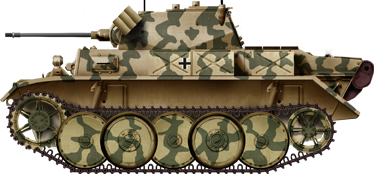
4th SpPzatb. 4th Panzer Division Eastern Front summer 1944
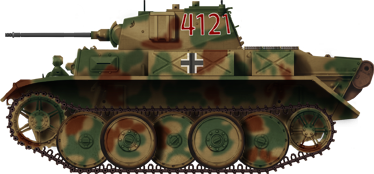
9th SpPzatb. 9th Panzer Division, Normandy France June 1944
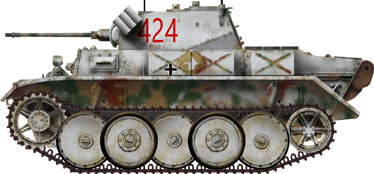
4th SpPzatb. 4th Panzer Division, East Prussia winter 1944/45
Gallery
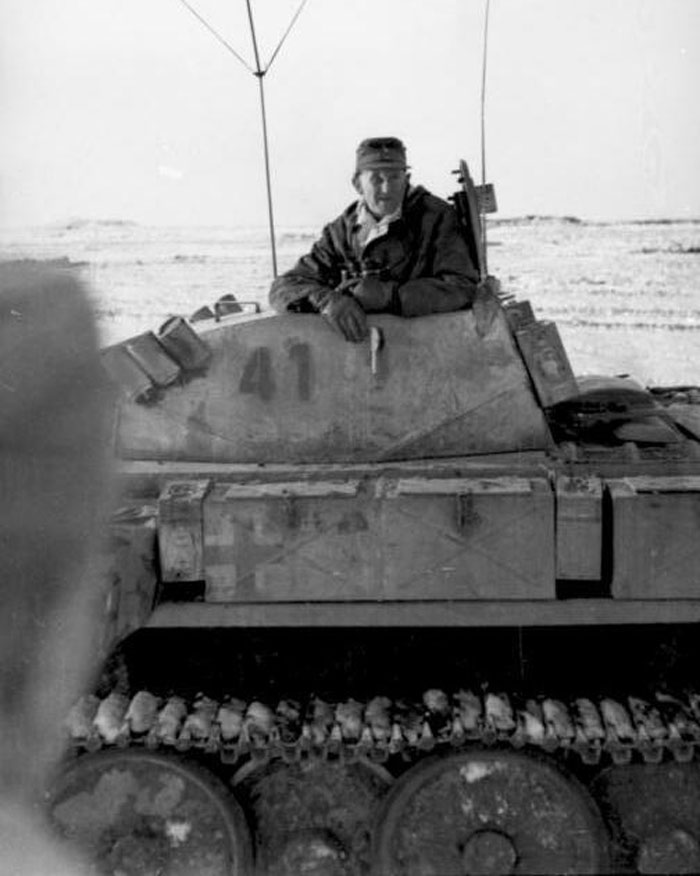
Bundesarchiv_Bild_Russia_winter_commander_luchs_turret
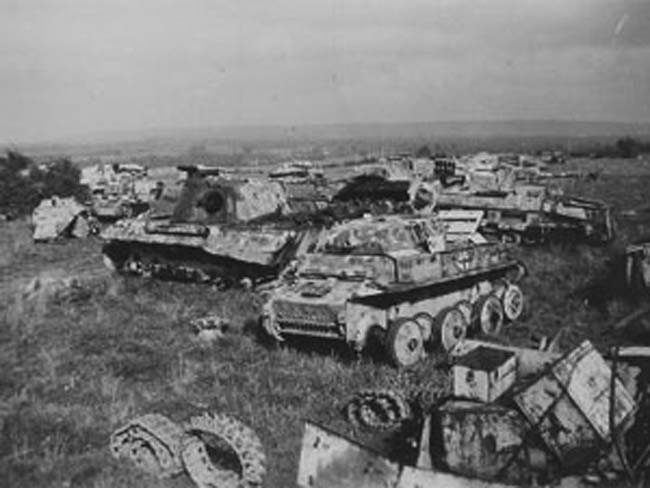
Mont-Ormel-Scrap
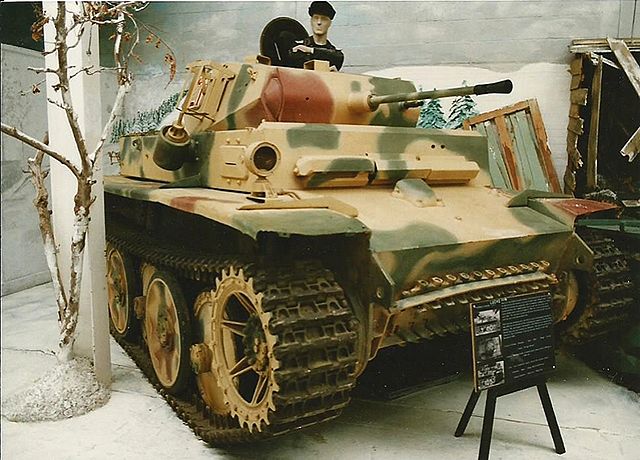
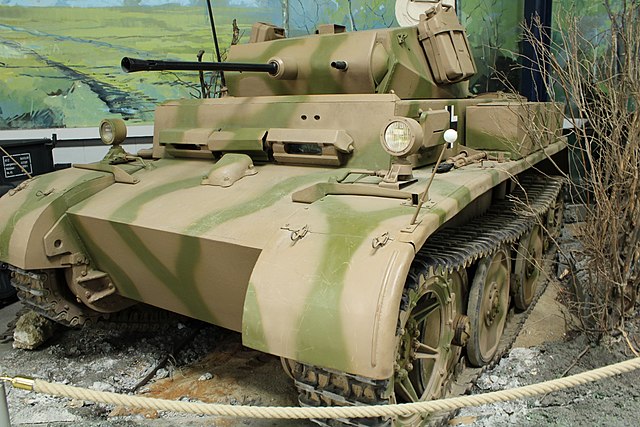
MDB_PZ_LUCHS_samur
panzer_II_L_saumur
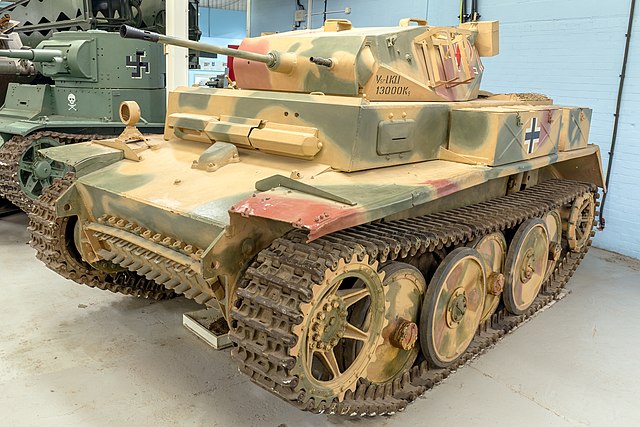
panzerkampfwagen_II_Ausfuhrung_L_front-left_2017_Bovington
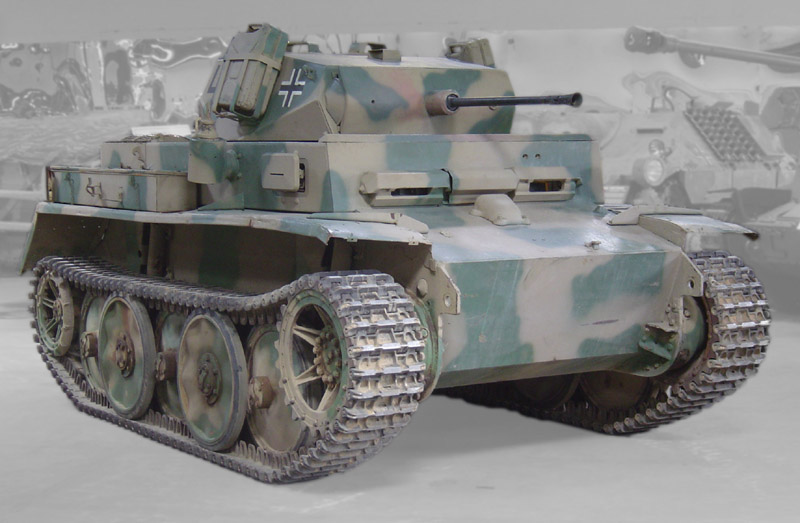
Pz-II-LSaumur
Video
Also: Panzer II Luchs start up and drive - Militracks 2017
WW2 Tanks




























WW2 tanks posters

All Tiger tanks liveries.

Panther liveries and variants

WW2 Armour - All tanks











Tanks aces and single tanks series

Find more there

Museums, Movies, Books & Games
The Tanks and Armor in pop culture
Tanks and armored vehicles in general are only really grasped when seen first person: The mass, the scale, it's all there. Explore also the way tanks were covered in the movie industry, in books and in video games.Movies:
Best tanks movie on warhistoryonline.com
On imdb.com
On bestsimilar.com/
miltours.com
liveabout.com/
watchmojo.com
Video Games:
pcgamesn.com
historyhit.com
levvvel.com
vg247.com/best-tank-games
mmobomb.com/
alienwarearena.com

